All posts in Domestic Workers
-
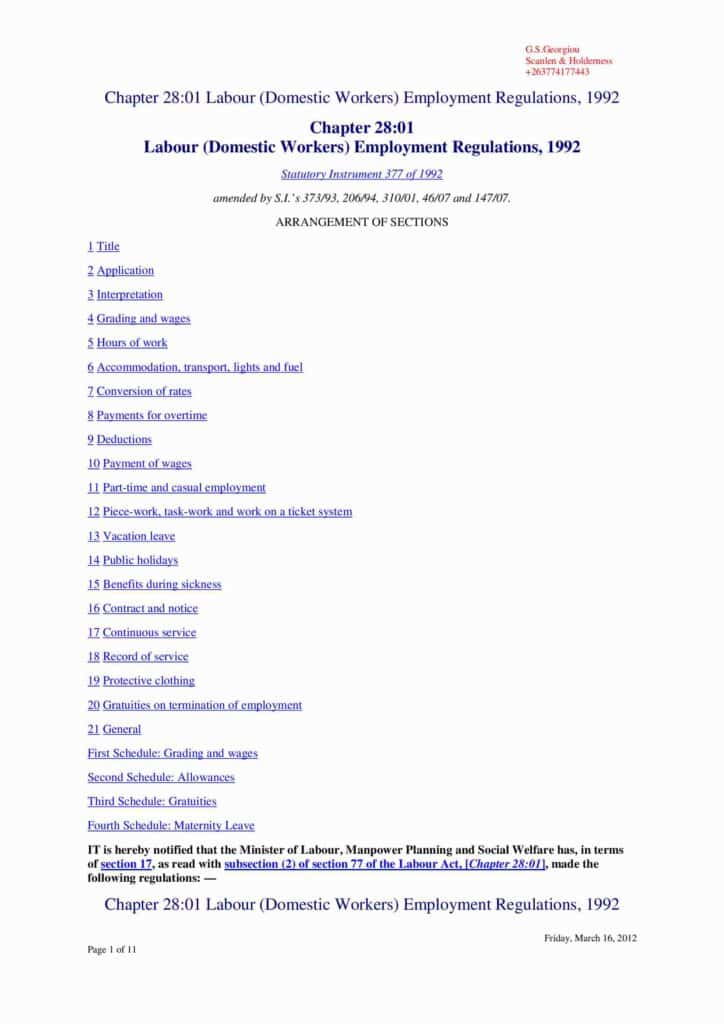 Legal Instruments
Legal Instruments
Labour Domestic Workers Employment Regulations, 1992
This document outlines the minimum wages and conditions of employment for domestic workers in Zimbabwe.
Read More -
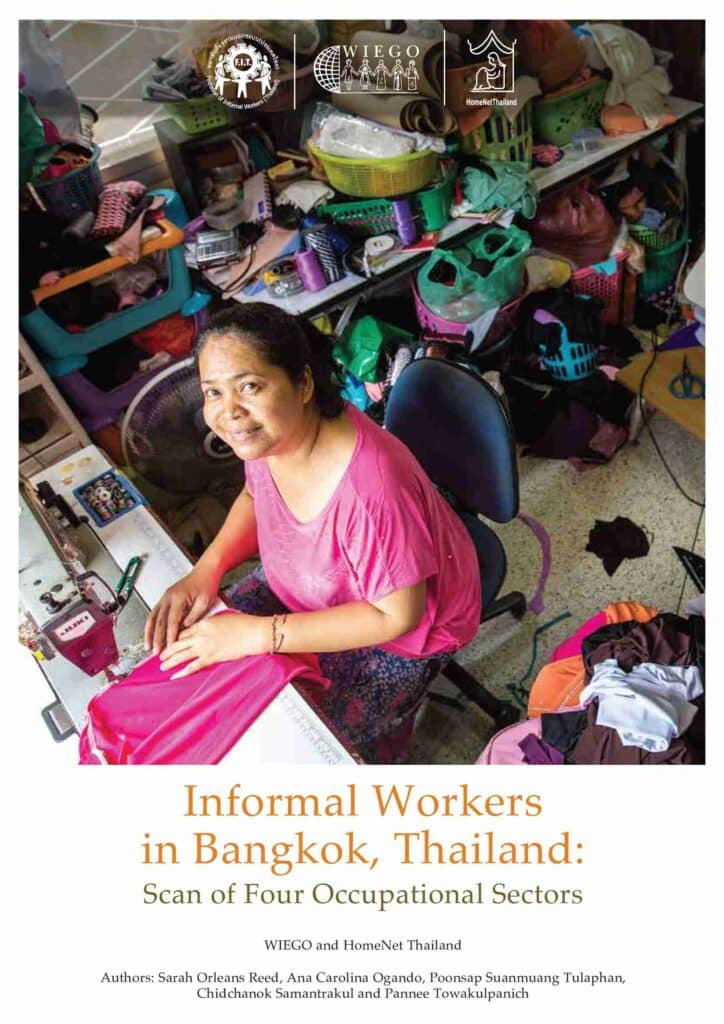 Toolkits and Guides
Toolkits and Guides
Informal Workers in Bangkok, Thailand: Scan of Four Occupational Sectors
“Informal Workers in Bangkok: A Scan of Four Occupational Sectors” explores key issues facing street vendors, motorcycle taxi...
Read More -
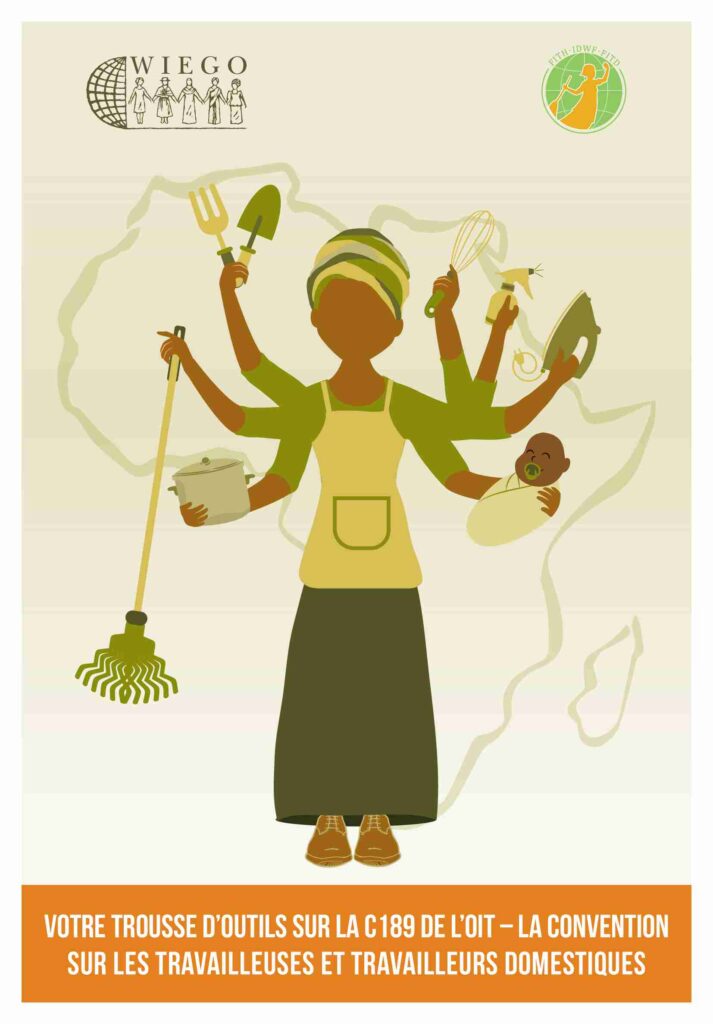 Toolkits and Guides
Toolkits and Guides
Votre trousse d’outils sur la C189 de l’OIT ‒ la Convention sur les travailleuses et travailleurs domestiques
WIEGO et la FITD ont fait équipe pour élaborer cette trousse d’outils afin de soutenir les affiliées de la FITD dans leurs efforts de traduire...
Read More -
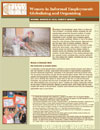 Fact Sheets/Infographics
Fact Sheets/Infographics
Informal Workers in Focus: Domestic Workers
This fact sheet offers information on the forces that cause women to become domestic workers, how many there are globally, their wages and the...
Read More -
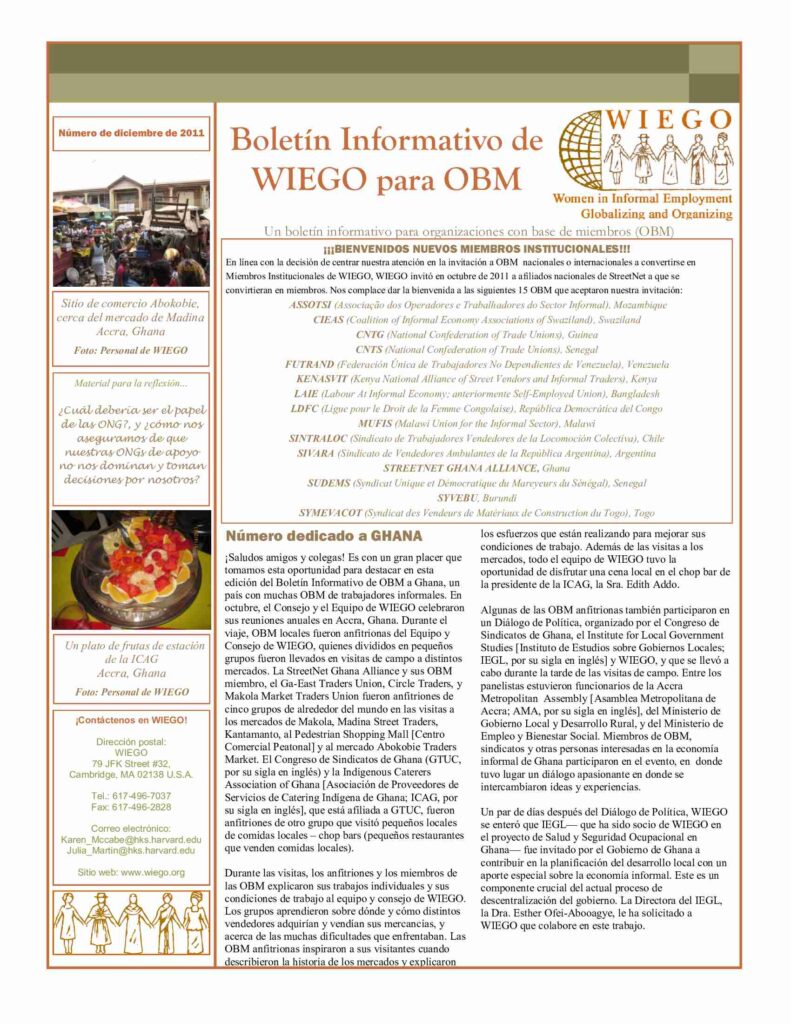 WIEGO Network Newsletters
WIEGO Network Newsletters
Boletín Informativo de WIEGO para OBM diciembre 2011
diciembre 2011
Read More -
 Toolkits and Guides
Toolkits and Guides
Effective Protection for Domestic Workers: A guide to designing labour laws
This guide is a practical tool for those involved in national legislative processes and in the design of labour laws, including government...
Read More -
Advocacy Materials
Salud y Seguridad Ocupacional y Trabajo del Hogar
Este informe contiene los resultados de un proyecto de investigación de cuatro años sobre la salud y seguridad ocupacional (SSO) y los trabajadores...
Read More -
WIEGO Network Newsletters
Lettre d’Information OBA de WIEGO avril 2013
Une newsletter de WIEGO aux organisations de travailleurs informels basées sur leurs adhérents (OBA), avril 2013.
Read More -
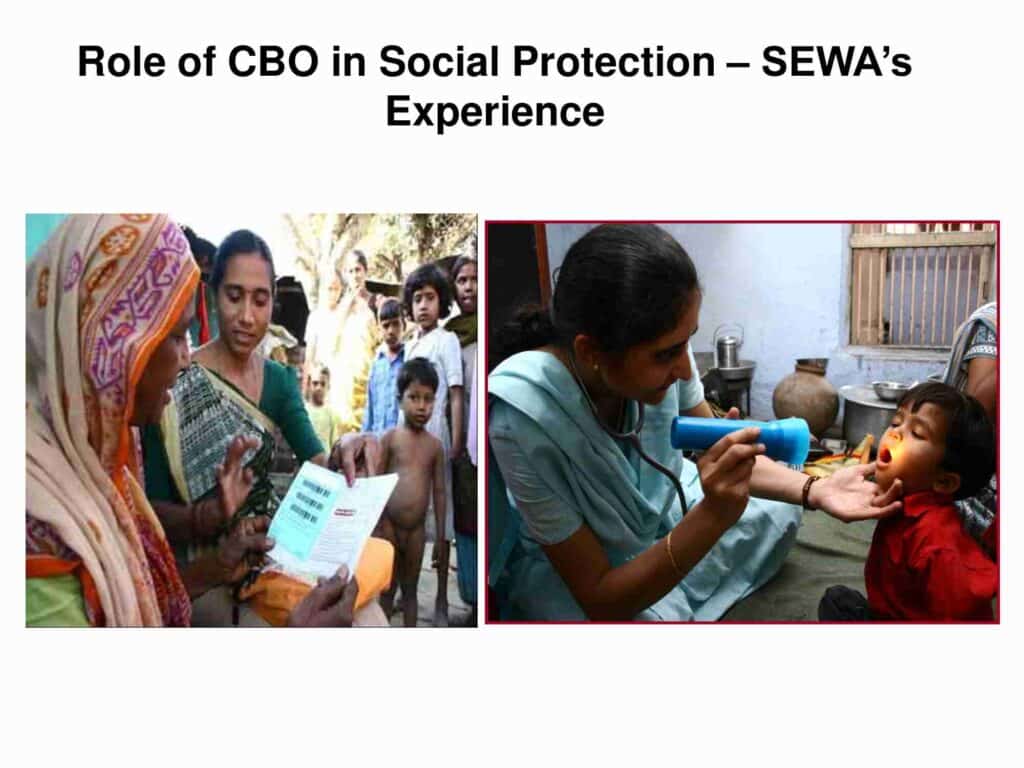 Presentations
Presentations
Role of CBO in Social Protection – SEWA’s Experience
This presentation shares information about Social Protection work by SEWA (Self Employed Women’s Association).
Read More -
WIEGO Network Newsletters
WIEGO MBO Newsletter December 2013
WIEGO’s December 2013 Newsletter for Membership-Based Organizations of Informal Workers
Read More